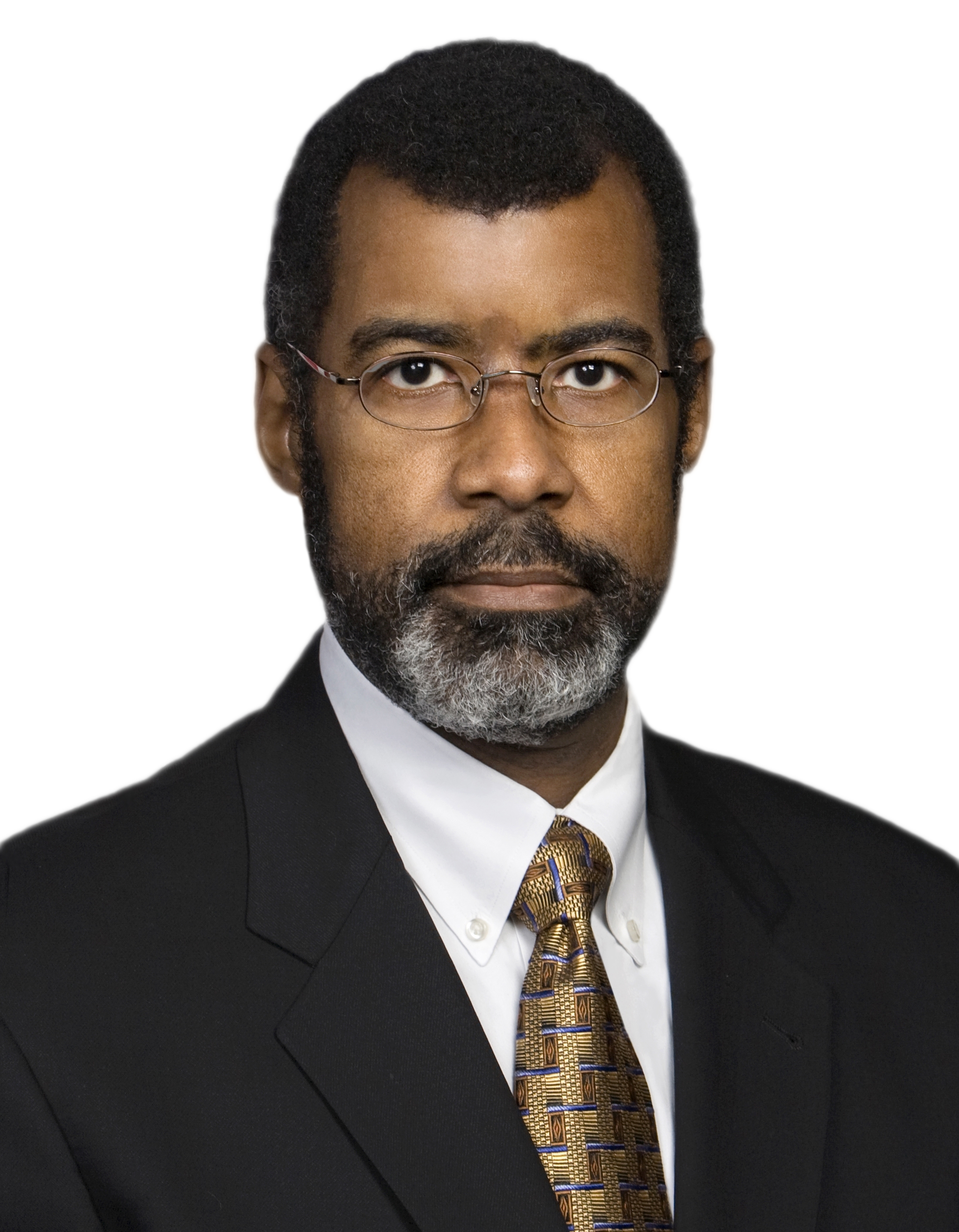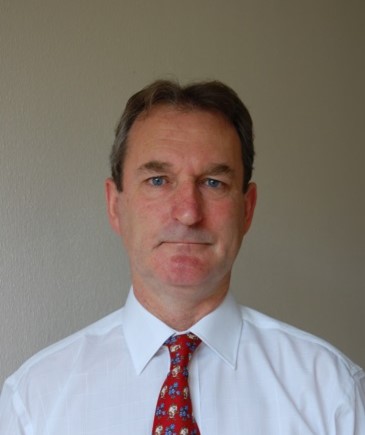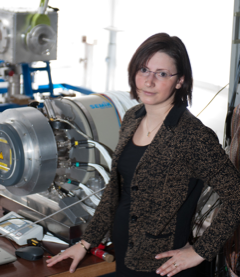|
William D. MAGWOOD, IV
Director-General, OECD Nuclear Energy Agency (NEA)
Nuclear Solutions: Innovation for an Energy Transition |
 |
Abstract: TBA
Bio: Mr Magwood took up his duties as Director-General of the Nuclear Energy Agency (NEA) on 1 September 2014. He has extensive experience in both the regulatory and developmental aspects of nuclear energy, including at the international level.
From 2010 to 2014, he served as one of the five Commissioners appointed by the US President and confirmed by the US Senate to the US Nuclear Regulatory Commission (NRC). While a commissioner, he advocated the importance of nuclear regulatory independence and the necessity of maintaining strong, credible and technically sound nuclear regulation in the United States and all countries that use nuclear power.
Prior to his appointment at the NRC, from 2005 to 2010 he provided independent strategic and policy advice to US and international clients on energy, environment, education, and technology policy issues. From 1998 to 2005, Mr Magwood was Director of the US Government’s civilian nuclear energy programme at the US Department of Energy (DOE). During his tenure, he established the Idaho National Laboratory; created activities that reversed the decline of US nuclear technology education; and launched important initiatives such as the Generation IV International Forum (GIF) and the US “Nuclear Power 2010,” which helped restart nuclear plant construction in the United States. He was also actively involved in the work of the NEA, serving as a Steering Committee Bureau member from 1999 to 2005, including a term as Chair of the Steering Committee from 2004 to 2005.
Prior to his experience at the DOE, Mr Magwood managed electric utility research and nuclear policy programmes at the Edison Electric Institute in Washington, DC, and was a scientist at Westinghouse Electric Corporation in Pittsburgh, Pennsylvania. Mr Magwood, a US national, holds Bachelor degrees in Physics and English from Carnegie Mellon University and a Master of Fine Arts from the University of Pittsburgh.
|
Dr. Alan OWENS European Space Agency, ESTEC, Noordwijk, The Netherlands Institute of Experimental and Applied Physics, Prague, The Czech Republic
Recent developments in sensor materials |
 |
Abstract: Early studies of the photoconductive properties of materials eventually led to an understanding of the solid-state and particularly of a new class of materials – the semiconductors. Their sheer number and diversity of properties give rise to a wide range of sensitivities covering almost the entire electromagnetic spectrum − from terahertz to gamma-ray wavelengths. The application of semiconductors to radiation detection and measurement through an understanding of the electronic properties of matter has come to dominate radiation physics – a field that did not exist 150 years ago. Of special interest has been the rise of compound semiconductors and more recently the organic semiconductors. Compound semiconductors have a number of distinct advantages over their elemental counterparts, Si and Ge. For example, wide-gap materials offer the ability to operate in a range of hostile thermal and radiation environments while still maintaining spectral resolutions <2% FWHM at X and gamma-ray wavelengths. Narrow-gap materials offer the potential of exceeding the spectral resolution of Ge by a factor of three. However, while compounds are routinely used as detection media at infra-red, optical and UV wavelengths, for hard X- and gamma-ray applications their development has been plagued by material and fabrication problems. So far only a few have evolved sufficiently to produce commercial detection systems. Recently there have been considerable advances in the development of organic semiconductors largely spurred on by the smart phone and tablet industries. While not destined to replace silicon-based technologies, they offer the promise of low cost, fully flexible devices for large-area displays and solid-state lighting. Much research currently focuses on solar cell and energy harvesting applications, although the hybrid organic-inorganic perovskites (HOIPs), such as formamidinium lead triiodide (CH(NH2)2PbI3), are now being explored as X- and gamma-ray detection media.
As well as on-going activities in semiconductors, scintillator research has undergone a renaissance since the discovery of the cerium doped lanthanum halides in the early 1990’s − the most notable outcome of which, has been the recent availability of large volume (>350 cm3) LaBr3(Ce3+), LaCl3(Ce3+) and CeBr3 high resolution scintillation detectors, with FWHM energy resolutions of 3−4% being achieved at 662 keV. Recent experiments with co-doping, using activators such as Eu and Pr, suggest that a further improvement to 2% is possible. These results are comparable with the best results obtained with a compound semiconductor such as CdZnTe. At present, the outstanding issue in scintillation physics is understanding and mitigating the effects of energy non-proportionality which currently limits the attainable energy resolution in all scintillators.
In this talk we summarize recent developments in scintillator and semiconductor research from a materials perspective. To improve performance, underlying efforts in both should continue on achieving material perfection. In the near and intermediate terms, performance improvement for semiconductors lies in the controlled and directed manipulation of charge, for example employing single carrier sensing techniques to neutralize the degrading effects of the poorest carrier, while for scintillators, it lies with the understanding and reduction of non-proportionality effects. In the longer term, it is clear that for semiconductors conventional detection techniques based on the manipulating the electrons charge using electric fields will reach an impasse in terms of sensitivity. A major step forward should be possible, by exploiting other obscure internal degrees of freedom of the electron in addition to its charge for nonvolatile information processing. For example, utilizing its spin or alternately the valley degree of freedom implicit in the band structure of some semiconductors.
Bio: Alan Owens holds an honours degree in physics and physical electronics, and a doctorate in astrophysics from the University of Durham, United Kingdom. He spent over 35 years engaged in the design and construction of novel detection systems for X- and gamma-ray astronomy at the Goddard Space Flight Centre in the USA and at the European Space Agency's European Space Research and Technology Centre (ESTEC) in the Netherlands. For the last 20 years he has been primarily involved in the development and exploitation of new technologies for space applications. Much of this work revolves around compound semiconductors for radiation detection and measurement, which by its very nature involves materials and systems at a low maturity level. Consequently, he has been involved in all aspects of a systematic and long-term program on material assessment, production, processing, detector fabrication, and characterization for a large number of compound semiconductors.
|
Prof. Dr. Katia PARODI Ludwig-Maximilians-Universität München, Department of Experimental Medical Physics, Munich, Germany
Getting to the point in particle therapy |
 |
Abstract: The usage of protons or even heavier particles like energetic carbon ions for radiation therapy was proposed 75 years ago by Robert R. Wilson. Since then, pioneering developments and applications have been pursued for several decades at several specialized institutions hosting powerful accelerators for beam production. With the advent of first hospital-based facilities in the 1990s, ion therapy, especially with proton beams, has been increasingly adopted in the clinical setting, making it rapidly emerging as a promising treatment modality in external beam radiation therapy. In particular, the favorable physical interaction properties of ion beams in matter enable concentrating the energy deposition in a well-localized maximum in depth, the so-called Bragg peak, offering optimal coverage of the tumour target volume along with better sparing of normal tissue and critical organs compared to the widely established photon therapy. Ions heavier than protons can also offer advantages from their reduced lateral scattering and localized enhancement of biological damage in the Bragg peak region due to their elevated ionization density when coming to rest.
Over the last years, considerable developments in accelerator technology, beam delivery, treatment planning and in-room volumetric image guidance have entered the clinical routine and enabled achieving even further improved conformation of the therapeutic dose to the tumour target volume. However, full exploitation of the advantageous properties of ion beams for therapy is still hampered by several sources of uncertainties in treatment planning and delivery. This talk will thus review the state-of-the-art and ongoing efforts tailored to reduce such uncertainties, with emphasis on new instrumentation aiming at improving the pre-treatment patient model, in particular for determination of the tissue stopping power relative to water, along with in-vivo verification of the actual dose delivery, or at least beam range, during or shortly after treatment. Moreover, it will address promising new directions paving the way to innovative concepts of rapid/real-time adaptive particle therapy, along with the development of precision pre-clinical research platforms to unravel the complex underlying biological mechanisms toward the development of novel therapeutic strategies of improved efficacy with reduced side effects.
Bio: Katia Parodi received her Ph.D. in Physics from the University of Dresden, Germany, in 2004. She then worked as postdoctoral fellow at Massachusetts General Hospital and Harvard Medical School in Boston, USA. In 2006 she returned to Germany as tenured scientist and group leader at the Heidelberg Ion Therapy Center, obtaining in 2009 her Habilitation from the Heidelberg University. Since 2012 she is full professor and Chair of Medical Physics at the Physics Faculty of the Ludwig-Maximilians-Universität München (LMU) in Munich, where she initiated a dedicated curriculum for Medical Physics within the Physics Master of Science study.
Her main research interests are in high precision image-guided radiotherapy with a special focus on ion beams, from advanced computational modeling to experimental developments of novel methods for imaging and in-vivo ion range monitoring for pre-clinical and clinical applications. Katia Parodi has been invited speaker and committee member at many conferences, contributed to over 200 publications in peer reviewed journals, 12 book chapters and a couple of patents. For her work, she received several national and international recognitions, including the Behnken Berger Award in 2006, the IEEE Bruce Hasegawa Young Investigator Medical Imaging Science Award in 2009, the AAPM John S. Laughlin Young Scientist in 2015 and the awarding of an ERC Consolidator grant in 2016. In 2017-2018 she served as president of the German Society for Medical Physics, and is since 2021 the Editor-in-Chief of the journal Physics in Medicine and Biology.

